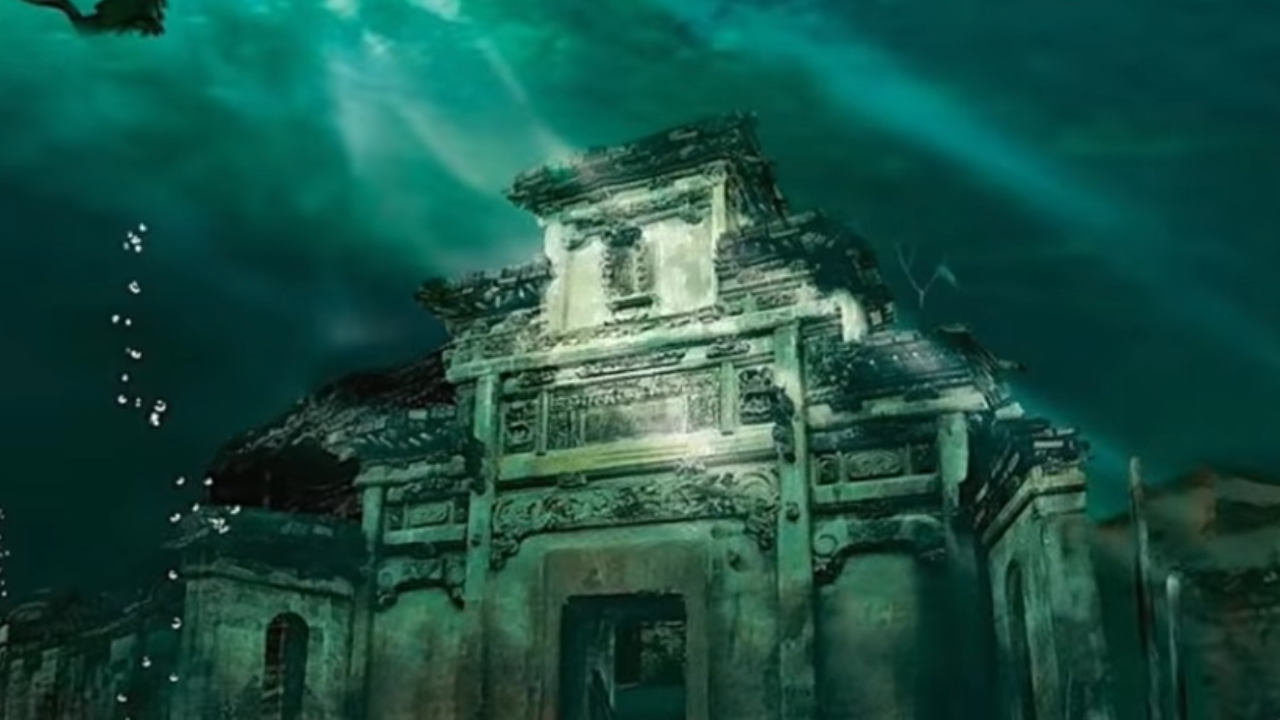Deep beneath the tranquil waters of Qiandao Lake in China's Zhejiang province lies an astonishing piece of history—Shicheng, or "Lion City." This once-thriving 600-year-old city has been hidden from view since 1959, when it was deliberately submerged to make way for the Xin’an River Dam and its hydroelectric station. Unlike the mythical lost city of Atlantis, Shicheng’s disappearance was intentional, yet it remains one of the world’s most mesmerizing underwater archaeological wonders.
A City Preserved by Water
Despite being submerged 40 meters (131 feet) underwater, Shicheng is remarkably well-preserved. The still, cold waters of the man-made lake have shielded the city's intricate architecture from the ravages of wind, rain, and sunlight. The lack of oxygen has also slowed decay, leaving stone structures and even wooden beams intact, offering a rare glimpse into the grandeur of Imperial China.
Shicheng’s origins date back to the Eastern Han Dynasty (AD 25–200), but it flourished under the Ming and Qing dynasties (1368–1912). The city was a bustling political and economic hub, filled with magnificent temples, memorial arches, wide streets, and grand courtyards. Today, its stone walls, towering gates, and intricate carvings of lions, dragons, and phoenixes still stand, frozen in time beneath the lake.
The History Behind Its Submersion
In 1959, the Chinese government embarked on an ambitious hydroelectric project to generate energy for the growing region. The construction of the Xin’an Dam created Qiandao Lake, a massive reservoir covering nearly 600 square kilometers (230 square miles). The project required the forced evacuation of 300,000 residents, many of whom had ancestral ties to the city dating back centuries.
Unlike many ancient cities lost to natural disasters or war, Shicheng's fate was sealed by progress. However, for nearly half a century, its story faded into obscurity, until modern technology allowed explorers to rediscover its hidden beauty.
Rediscovery and Exploration
Shicheng was "rediscovered" in 2001 when the Chinese government launched an underwater expedition to explore the ruins. Using advanced sonar and diving equipment, researchers captured hauntingly beautiful images of the submerged city. In 2011, Chinese National Geography published stunning visuals, reigniting public interest and paving the way for more exploration.
One of the city's most unique features is its five entrance gates, an unusual deviation from the traditional four-gate design of ancient Chinese cities. Explorers have also identified 265 archways, some dating back to 1777, adorned with exquisite carvings. These elements offer valuable insights into Ming and Qing dynasty architecture and city planning.
A Diver’s Dream
Today, advanced divers have the rare opportunity to explore this breathtaking underwater wonder. Between April and November, specialized dive expeditions operate, allowing experienced divers to navigate the city's submerged streets. However, due to low visibility and deep-water conditions, only those with night diving and buoyancy control experience are permitted to explore its depths.
Dive operators like Big Blue and Zi Ao Dive Club offer guided expeditions, but the city remains largely unmapped. As technology advances, researchers hope to create detailed 3D models of Shicheng, preserving its legacy for future generations.
A Time Capsule of Imperial China
Shicheng is more than just an underwater attraction—it is a cultural time capsule, offering a unique window into China’s past. The lake has unintentionally preserved a piece of history, protecting it from the erosion that would have occurred had it remained exposed on land.
While its submersion was a consequence of modernization, Shicheng’s rediscovery has sparked global fascination, blending archaeology, history, and adventure in one of the world’s most unique sites. Whether as a breathtaking dive site or a historical treasure waiting to be fully explored, Lion City continues to capture imaginations and whisper its stories from beneath the waves.









0 commentaires: